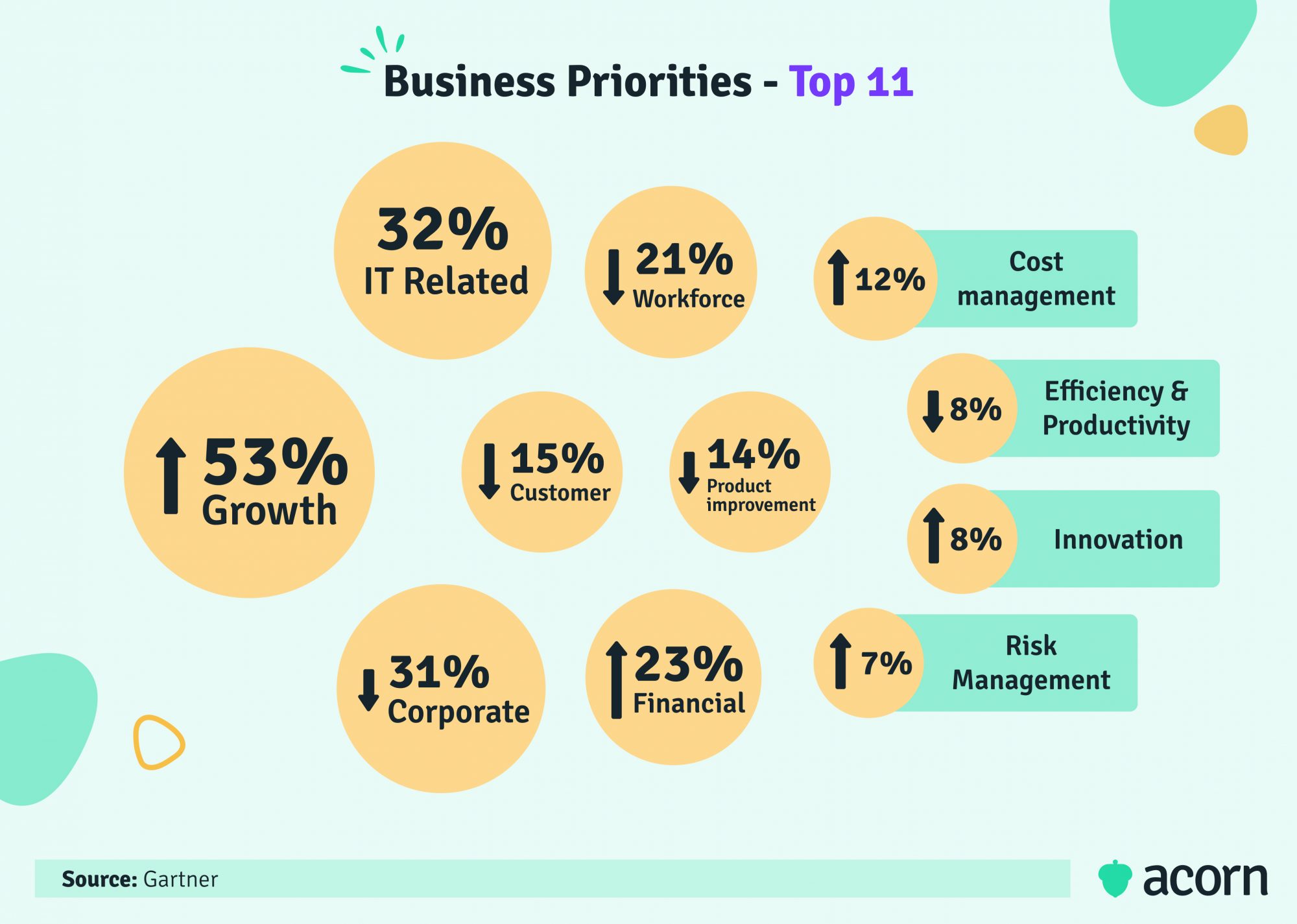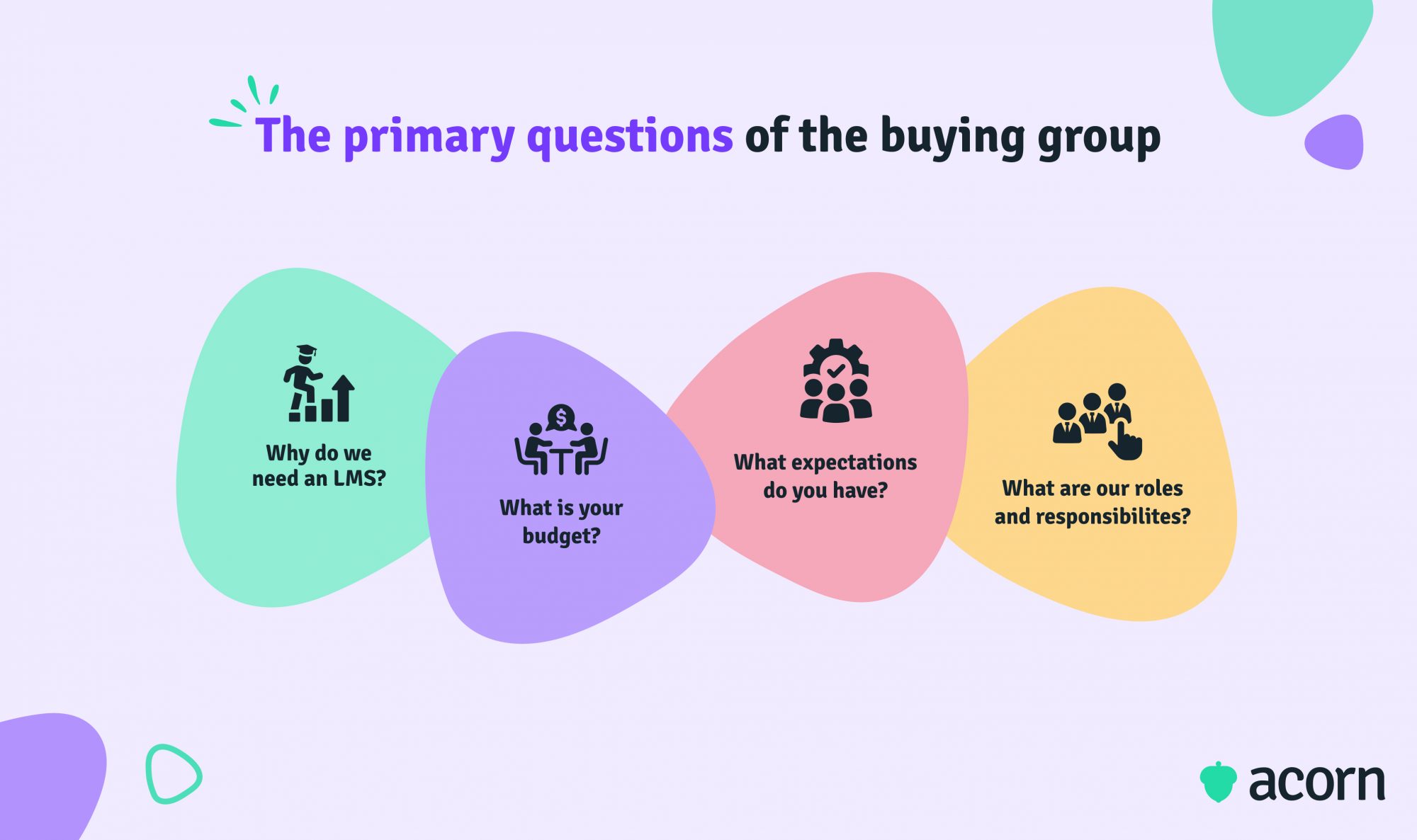Building Consensus for Your Next PLMS Purchase

Building consensus in your buying group isn’t easy. Without this guide, that is.
We all can appreciate how hard it is to build consensus in your buying group. Whether it be L&D championing a certain training course, HR leadership focused on closing gaps, Finance checking the numbers, Legal checking the terms or IT worried about where the data is stored, there are multiple stakeholders involved with their own concerns.
You can see where the challenge lies: They all have priorities, often competing, that they each believe is the most important concern. And in the main, actually buying learning technology not priority number one for them. What this then creates is a buying group with conflict—and just at the time when we need consensus to move forward.
Finance is the custodian of the company cash-flow; they need to make sure you get absolute bang for your buck. Distilled down, Legal’s role is to manage and minimise risk to the organisation. IT? Data, security and privacy all are priorities—and with this comes keeping employees, and the brand, safe. HR leadership has everything from recruitment, onboarding, performance management and more competing for their attention. Then there is L&D, who want to optimise engagement and utilisation of education for employees.
How then do you bring all these individual entities with their competing priorities together, so that you can all gain consensus on the right path forward—especially when they’ll all have different learning technology questions? You work towards creating a common thread.
What is a common thread?
The short answer: The common thread is the tie that binds you all together. Long answer: As with all departments within businesses, you each have your own distinct priorities. And where do these priorities come from? For most organisations that follow a structured approach, they flow down from the mission and CEO’s priorities.

For executive leadership teams, their personal objectives for the year are normally a flow down of what the CEO wants—the CEO’s priorities being what the organisation has to deliver, whether that’s related to better outcomes for citizens in the public sector or delivering more shareholder value in the private sector.
From this point, the executive leaders’ objectives will inform the objectives of their management teams. And so the flow continues. This cascade down is key, for it is how leading organisations pull together to deliver on the mission of the business. Therefore, when we think about how to establish the common thread, we need to swim upstream and establish what is the one thread that binds you all together.
Let’s consider Jane, who leads L&D at XYZ Constructions, to really understand a common thread flow in action. Jane has identified that XYZ Constructions needs to get a new, user-friendly and easy to maintain performance learning management system, but she has been confronted with the reality that she will have a large buying group that includes her boss (Head of HR), and the Legal, Finance and IT departments. She knows she will get PLMS questions. Jane has been on this journey before at a past company, and knows the path that lays ahead is bumpy. So, with the wind in her hair, she sets off to hypothesise what the common thread could be that brings these groups together.
She starts by familiarising herself more broadly with what CEOs care about in the coming year. She reads the following from Gartner:

Jane takes this contextual data, feeling empowered and more emotionally intelligent to the CEO’s world. She then looks through the annual report and re-reads the notes from XYZ Construction CEO Sandra’s speech at the company kick-off laying the vision for what is to come.
Within this, Jane establishes there are three mission-critical priorities for CEO Sandra and the business:
- Double digit growth
- Reduce employee attrition by 5%
- Increase efficiency and productivity.
Feeling confident with this new information—and a clear common thread—Jane sets stakeholder meetings knowing that the PLMS she wants will help with business goals. Now she only has to bring the team along with her. To do this, Jane will need to understand what PLMS questions will come her way.
Want to see Acorn PLMS in action?
Hit the book a free demo button here, take seconds to fill in your details, and find out why Acorn truly is the best PLMS.
Answering the primary questions of the buying group
Whilst buying groups do have varied questions that relate to each individual’s world, there are consistently four main questions we see when it comes to making a PLMS purchase:
- Why do we need an PLMS?
- What is your budget?
- What expectations do you have?
- What are our roles and responsibilities?
Let’s unpack these one at a time, with our own questions to ask in between:
Why do we need a performance learning management system?
Jane knows this question is coming from each stakeholder. Between the costs and learning curve of implementation, buying software is a serious endeavour that some departments may be hesitant to give attention or resources to. They want to sanity check that the investment is necessary and ensure that any significant enterprise-wide investment would represent value for them and their department, too.
How would we help Jane think through this?
The main stakeholder engagement here will likely be with Procurement and IT. Both parties have potentially looked at purchasing learning technology before, but we’ll start with procurement.
As the custodian of good buying, we know they’ll question an investment of this size. What we also know is that procurement’s role is evolving; gone are the hazy days of the ’80s and ’90s where the focus was on driving price down. Today, whilst still important to have a competitive price, procurement must also consider social procurement and de-risking the business through contract terms. That’s why you can come together and help them meet their need to remove risk (and show your commitment to de-risk) by finding a PLMS provider that won’t lock you into 3-year contracts. Once you give procurement this win, you can bring it back to your common thread on reducing employee attrition, considering learner engagement and growth is proven to increase employee engagement.
On the other hand, IT will care about privacy, data and security. Here, you want to be armed with the relevant information on factors like network security, secured connection, user access, third-party certification and data recovery—so who do you contact? (And not just via email. Having face-to-face or face-to-screen conversations is important for creating trust, building relationships and avoiding the inbox black hole here.)
There’s no doubt about it, you need this information to move forward. In regards to the question ‘why do we need an PLMS? ’ and the conversation with IT, our number one tip is to give IT leadership assurances and evidence that the PLMS will be used to rollout compliance training to all employees. Still stuck? Roll back up to the three mission-critical priorities. IT will likely care the most of all departments about increasing efficiency—automated training takes a technological burden off their shoulders and effectively promises that they’re not going to troubleshooting related day-to-day problems in future (particularly if you procure an PLMS from an SaaS vendor).
What is the budget for the performance learning management system?
This question can take one of two angles.
- What’s in it for me?
- What am I losing for my department by you getting the budget over one of my department’s initiatives?
Whether consciously or subconsciously, each department lead who is a peer of yours will feel that you are competing for budget. So with this in mind, you need to seriously consider if your PLMS initiative should be prioritised over their initiative and how you can sell the value of that choice. Alternatively, if they are funded from different budgets, it’s a matter of demonstrating they get maximum value from playing a role in your investment.
So, how would we help Jane think through this?
Funnily enough, Jane has two directions in which she could go.
Firstly, she can focus on the fact each department will get access to the PLMS as it will be an enterprise purchase. The universal (or enterprise-wide) benefits include:
- Further employee engagement
- Understanding the training needs of their team
- Upskilled and reskilled teams
- Reduced attrition.
Every people leader values these benefits when leading their teams, regardless of department.
But let’s say this doesn’t get the complete purchase consensus you are looking for. A question to always ask is, where to next?
Employee training has the potential to affect all business outcomes, right down to each department’s unique prerogatives and objectives. Within XYZ Constructions, there is one common thread through the entire business that a PLMS purchase can influence: The 5% attrition reduction. So, Jane’s second option is to focus on how training employees can help with attrition. Most stakeholders will want to know what current challenges they have that a PLMS will mitigate, rather just the added benefits. By presenting the PLMS purchase as a company-wide solution that enables one of the company-wide goals, the consensus is more easily brought together.
Department heads will understand the inherent value of training, because they understand that an organisation can’t grow without skilled employees. They just need to hear it in business terms Jane would do well to outline the infrastructure required to maintain an PLMS and the necessity of support from the IT team or a vendor to ensure a smooth implementation. So, Jane works with Finance to build a business case that outlays expenditures against value.
In this instance, Jane should consider:
- A plan for content development (i.e., whether courses will be developed in-house, by a vendor or sourced from third party content providers)
- Shelf-life and relevance of courses offered in terms of skills learned and applied
- The approximate or projected cost of rollout
- Forecasting changes in number of employees, and therefore users
- Time to value on skills
- Return on investment of training.
What expectations do you have?
Responsibility aside, Jane will also be faced with managing any expectations surrounding digital transformation. Having discussed the promised benefits and challenges to be mitigated, stakeholders will have their ideas of success within their departments—in terms of expenses, risks and objectives.
In their book Software Architect Bootcamp, Raphael Malveau and Thomas J. Mowbray write that expectation management “is one of the most powerful weapons in psychological warfare”. Now, we’re not saying procuring an LMS is a game of chicken. But what we, Malveau and Mowbray are saying is that in practicing good expectation management, people will often put aside the instinctual need to trump others in order to more conscientiously debate the value of different ideas.
So, how would we help Jane think through this?
Before jumping into debating the merits of an PLMS (because, yes, you will have to if you are the Jane of your organisation), there are some questions you might want to cut your teeth on. Think about how you would feel if you were to have a change management project put upon you, knowing that a) you will personally have to learn something new and b) the people you lead would need to go through change too? You’d probably want to feel part of the decision making process and see the value within your projects. You’d want to have confidence your colleagues are choosing the right learning technology.
This is where it is good for both parties to ask and set expectations on what is and will be required. By going on this journey together, you can create shared expectations linked to the common thread of organisational goals. Performance learning management systems shouldn’t be made difficult to purchase by internal buying groups, if you can find your common thread the whole process becomes a lot easier.
Expectations are much more easily managed when they are monitored. Creating a plan for the rollout of a PLMS will create ever more lofty expectations amongst your stakeholders, particularly if the project goes from strength to strength. Building a requirements change template will help ease any concerns that an eLearning platform may not quickly adapt to internal changes, as well as helping with risk response in future. Ergo, undergoing regular check ins with stakeholders will ensure will communicate that:
- Their input and experiences are important to this initiative;
- Their unique business objectives are valued and impactful; and
- This initiative is truly beneficial company-wide (and doesn’t favour one department with resources).
What are our roles and responsibilities?
Department leaders are busy people. We know that, they know that, and Jane herself knows that. Most will assume that Jane, as the L&D lead, will take responsibility for taking point on this project. That doesn’t mean that she’ll be responsible for all action, though—but from Jane’s previous experience, she knows breaking this news in a way that sounds enticing isn’t the easiest. Because each department lead will be lending some of their time and won’t be reporting to Jane, they may not be inclined to offer their input voluntarily.
So, how would we help Jane think through this?
The key here is to clarify scope. The biggest responsibility each department lead will have is to communicate the capability gaps they see in their employees.
Take Legal. Their biggest concern is largely during the procurement process and ensuring the initial contract is not riddled with fine print, sure, but you’ll also want to call on them when contract renewals come around. Jane could say, “I’ll need you once a year or so”, but the lack of specificity so far in advance is likely to be met with contempt. Rather, Jane could make it a major project milestone, inviting Legal to sit down with her to discuss their review of the past year’s value and consider what a contract may need to include to accommodate evolving business objectives going forward. This demonstrates the value from Legal’s involvement, but ensures they are still considered subject matter experts rather than being responsible for the entire project.
Creating major project milestones on a defined timeline will help all department leads understand their input is crucial, but limited to a select few moments. This is beneficial on three fronts:
- Jane can design a frequent status reporting methodology, which allows top management to forecast their involvement.
- Jane can further create a plan for potential impacts or hurdles, ensuring the process is de-risked for other leads and their department milestones aren’t affected.
- It’ll also help to create a common thread that shows the flow between departments and the reciprocal impact of each lead’s input.

Closing thoughts on building consensus when making a software purchase such as an PLMS
We get it, software of any sort is never easy to buy. With many a platform to choose from, features to consider (oh so many features), checking the support is, well, not always the first priority. But ensuring you’ll have good support, that your needs are met, the vendor’s information is accurate, that the vendor takes compliance seriously, and of course knowing that customer pricing is competitive are important factors to getting buy-in. You have a lot to consider for your next software purchase—and to make sure you get it right. eLearning is of course no different.
With all this in mind, make sure you stay up top when it comes to understanding the organisation’s primary objectives, and what the CEO wants to achieve. Armed with this, the rest of the consensus building, in theory, should be a breeze.